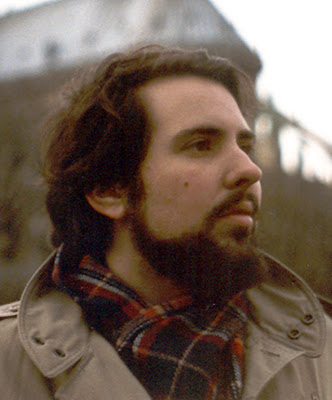 Author Aaron Lazar with grandson, Julian
Author Aaron Lazar with grandson, JulianHi, folks.
I'm off in Boston this week, moving my daughter into her new apartment so she can start grad school for her degree in Music Therapy. Time is short, so I've chosen another interview to share with you.
I'm off in Boston this week, moving my daughter into her new apartment so she can start grad school for her degree in Music Therapy. Time is short, so I've chosen another interview to share with you.
This one was conducted by Kodak. When they asked me to be their "Print Ambassador," we conducted an interview after shooting footage all over the Genesee Valley. By the way, my "day job," as an electrophotographic engineer, involves research and development on massive digital presses. That's what we're discussing, below.
Kodak: Are there ways in which designing presses helps you write mysteries, and vice versa?
Aaron: At first thought, you might imagine that there could be NO connection between engineering and writing. After all, electrophotographic engineering involves the science behind the digital presses we design and manufacture at NexPress, the physics behind the toner, developer, imaging cylinders, and the hardware that work together to deliver prints. One might be hard put to understand how such work - data, science, formulas, and hardware - could be even remotely related to writing. But when I'm on a project, whether it's the development of a new toner to meet incredibly stringent standards, or solving a complex system problem, there's always a mystery that needs to be solved. It's that challenge, that incredibly exciting contest, that gets my blood pumping. And its a similar excitement that courses through my veins when I'm reading or writing a mystery, trying to solve it, absorbing or creating clues, and imagining "whodunnit."
Of course, no matter what one's profession, there's always human drama in real life to stimulate a writer's emotions and imagination. My colleagues have experienced appalling trials, and these traumas spark fears.
What would I do if I lost either of my baby grandsons? How would I deal with the sudden death of my wife? What if I experienced a life changing heart attack? How would I handle it if one of my daughters was being abused, or was in danger?
Those are the fibers that make up the cloth of every day life. As in news stories, they generate a germ of an idea that may blossom and grow into a storyline or an entire book. Most of the themes I've used had come from my own life, but the influences of those around me cannot be denied.
Kodak: Why do you write mysteries as opposed some other genre?
Aaron: It's common wisdom that you should "write what you read."
I've always been a fan of mysteries, and used to devour them as a child. My parents would bring home boxes of books from auctions, and I'd be happily lost for weeks in series like The Hardy Boys. I graduated to books by Agatha Christie, Rex Stout, and Helen McInnes in the years that followed. As time went on, I progressed to my current favorite novelists, including John D. MacDonald, James Patterson, Dick Francis, Clive Cussler, Laurie R. King, Lillian Jackson Braun, Peter Mayle, Dean Koontz, Stephen King, and Tony Hillerman.
Kodak: What's the feeling when you think of people actually holding a book in their hands which you've written, sitting with it, holding it, turning the pages, reading the printed words?
Aaron: The feeling is rather humbling and most phenomenal. To think of someone sitting in their living room, inhaling the sights and sounds and emotions I've painted on the printed page, fills me with an indescribable sense of joy and... a little bit of nervousness, too. My readers could be in Australia, or Iceland. Africa or Dallas. On a boat or in a plane. In bed or by the fireplace. Anywhere. Any time. Reading my words. My words... my characters, in the hands of folks I've never met. It gives me goose bumps. My parallel universe is suddenly out there, exposed, being absorbed by someone else. It's a little bit scary, but it can also be validating when they ask for more. That's the best part!
Kodak: Ebooks haven't really caught on. Do you think it's because of that whole tactile experience - holding the book, turning the pages?
Aaron: Ebooks are a great value that open up a world of publishing to thousands of authors whose work might not be available through other means, and some folks just love them. However, the majority of my readers have told me they want print books. They want to hold the book in their hands, turn the pages, feel the accompanying sense of "progress" that comes with it, and be able to put the book on their shelf when they're done. They want to save it for their children, and know it's going to be there in a hundred years.
I feel the same way. I like to carry a book in my back pocket or briefcase, sit out in the sun without worrying about the sun glaring off a screen, or having to tote around a heavy laptop or ebook reader. I especially love the feeling of holding the book in my hands when I finish a great read. It feels like a more personal connection with the author, without electronic ads popping up in the background. I turn the book around in my hands and "savor" the look and feel of it when I'm done. It becomes like an old friend, and the experience is only completed after I place it on my favorite bookshelf. Plus I especially love it when I can get the author to sign the flyleaf.
Kodak: Print has obviously played a big part in your life. Could you expand on that?
Print has opened up the whole world to me, allowing me to connect with my readers in a way that wouldn't be possible otherwise. That's what it's all about - the connections. The people I've met at book signings or through email have been astounding. And oftentimes, there are moments that just floor me.
Take for example the case of Jamie, a very successful young entrepreneur, who contacted me after reading Double Forté. He told me Gus LeGarde had "shown him that cooking a pot of stew, reading a stack of books and watching the Bambi movie with the ‘little ones' in our lives is more important that studying statements, proformus, and packing for the next business trip." He said, "I feel as though Gus, through your words, is actually slowing me down a little bit. Tonight, because of your book, I spent a little extra time while tucking them in. reading an extra bedtime story, and rocking the little one in her bedroom for ten minutes or so." His feedback warmed my heart. Even though I write mysteries, Gus is a diehard family man, and the books are filled with warm moments between him and his grandson, for example. If just one of my books causes just one of my readers to spend more time with their children...that's more than enough for me.
Kodak: What do you think it means to be an ambassador for print? And how do you think that role, for you or anyone, will continue to drive the future of print?
Aaron: Being an ambassador for print means to engage, motivate, and inspire readers. By creating a mystery series that grabs readers who want to learn more about the characters, to delve into their past and future, to dig deeper into the mysteries and come back for more - that seems to inspire them to read more, and that means more printing.
And if my humble words can influence one single reader, like Jamie, then that is the most satisfying and validating part of the whole process. Let's face it, print is here to stay. And along with all the other authors on this planet, I'm honored to be a small part of that process.
Kodak: Are there ways in which designing presses helps you write mysteries, and vice versa?
Aaron: At first thought, you might imagine that there could be NO connection between engineering and writing. After all, electrophotographic engineering involves the science behind the digital presses we design and manufacture at NexPress, the physics behind the toner, developer, imaging cylinders, and the hardware that work together to deliver prints. One might be hard put to understand how such work - data, science, formulas, and hardware - could be even remotely related to writing. But when I'm on a project, whether it's the development of a new toner to meet incredibly stringent standards, or solving a complex system problem, there's always a mystery that needs to be solved. It's that challenge, that incredibly exciting contest, that gets my blood pumping. And its a similar excitement that courses through my veins when I'm reading or writing a mystery, trying to solve it, absorbing or creating clues, and imagining "whodunnit."
Of course, no matter what one's profession, there's always human drama in real life to stimulate a writer's emotions and imagination. My colleagues have experienced appalling trials, and these traumas spark fears.
What would I do if I lost either of my baby grandsons? How would I deal with the sudden death of my wife? What if I experienced a life changing heart attack? How would I handle it if one of my daughters was being abused, or was in danger?
Those are the fibers that make up the cloth of every day life. As in news stories, they generate a germ of an idea that may blossom and grow into a storyline or an entire book. Most of the themes I've used had come from my own life, but the influences of those around me cannot be denied.
Kodak: Why do you write mysteries as opposed some other genre?
Aaron: It's common wisdom that you should "write what you read."
I've always been a fan of mysteries, and used to devour them as a child. My parents would bring home boxes of books from auctions, and I'd be happily lost for weeks in series like The Hardy Boys. I graduated to books by Agatha Christie, Rex Stout, and Helen McInnes in the years that followed. As time went on, I progressed to my current favorite novelists, including John D. MacDonald, James Patterson, Dick Francis, Clive Cussler, Laurie R. King, Lillian Jackson Braun, Peter Mayle, Dean Koontz, Stephen King, and Tony Hillerman.
Kodak: What's the feeling when you think of people actually holding a book in their hands which you've written, sitting with it, holding it, turning the pages, reading the printed words?
Aaron: The feeling is rather humbling and most phenomenal. To think of someone sitting in their living room, inhaling the sights and sounds and emotions I've painted on the printed page, fills me with an indescribable sense of joy and... a little bit of nervousness, too. My readers could be in Australia, or Iceland. Africa or Dallas. On a boat or in a plane. In bed or by the fireplace. Anywhere. Any time. Reading my words. My words... my characters, in the hands of folks I've never met. It gives me goose bumps. My parallel universe is suddenly out there, exposed, being absorbed by someone else. It's a little bit scary, but it can also be validating when they ask for more. That's the best part!
Kodak: Ebooks haven't really caught on. Do you think it's because of that whole tactile experience - holding the book, turning the pages?
Aaron: Ebooks are a great value that open up a world of publishing to thousands of authors whose work might not be available through other means, and some folks just love them. However, the majority of my readers have told me they want print books. They want to hold the book in their hands, turn the pages, feel the accompanying sense of "progress" that comes with it, and be able to put the book on their shelf when they're done. They want to save it for their children, and know it's going to be there in a hundred years.
I feel the same way. I like to carry a book in my back pocket or briefcase, sit out in the sun without worrying about the sun glaring off a screen, or having to tote around a heavy laptop or ebook reader. I especially love the feeling of holding the book in my hands when I finish a great read. It feels like a more personal connection with the author, without electronic ads popping up in the background. I turn the book around in my hands and "savor" the look and feel of it when I'm done. It becomes like an old friend, and the experience is only completed after I place it on my favorite bookshelf. Plus I especially love it when I can get the author to sign the flyleaf.
Kodak: Print has obviously played a big part in your life. Could you expand on that?
Print has opened up the whole world to me, allowing me to connect with my readers in a way that wouldn't be possible otherwise. That's what it's all about - the connections. The people I've met at book signings or through email have been astounding. And oftentimes, there are moments that just floor me.
Take for example the case of Jamie, a very successful young entrepreneur, who contacted me after reading Double Forté. He told me Gus LeGarde had "shown him that cooking a pot of stew, reading a stack of books and watching the Bambi movie with the ‘little ones' in our lives is more important that studying statements, proformus, and packing for the next business trip." He said, "I feel as though Gus, through your words, is actually slowing me down a little bit. Tonight, because of your book, I spent a little extra time while tucking them in. reading an extra bedtime story, and rocking the little one in her bedroom for ten minutes or so." His feedback warmed my heart. Even though I write mysteries, Gus is a diehard family man, and the books are filled with warm moments between him and his grandson, for example. If just one of my books causes just one of my readers to spend more time with their children...that's more than enough for me.
Kodak: What do you think it means to be an ambassador for print? And how do you think that role, for you or anyone, will continue to drive the future of print?
Aaron: Being an ambassador for print means to engage, motivate, and inspire readers. By creating a mystery series that grabs readers who want to learn more about the characters, to delve into their past and future, to dig deeper into the mysteries and come back for more - that seems to inspire them to read more, and that means more printing.
And if my humble words can influence one single reader, like Jamie, then that is the most satisfying and validating part of the whole process. Let's face it, print is here to stay. And along with all the other authors on this planet, I'm honored to be a small part of that process.

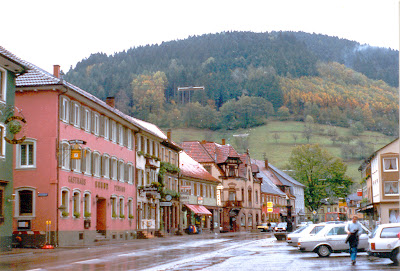
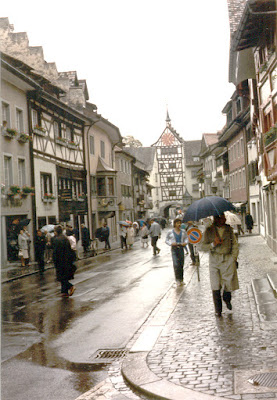
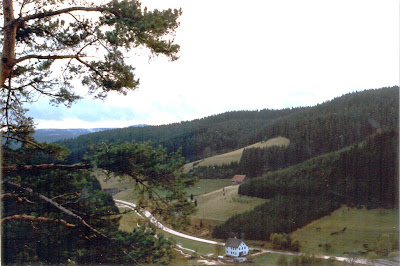
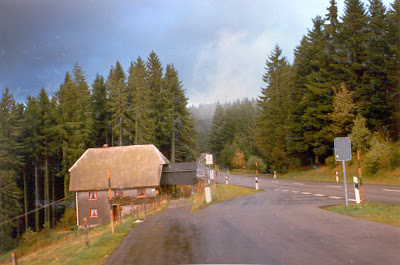






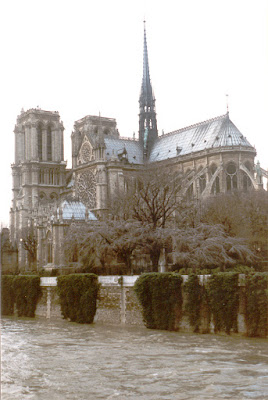
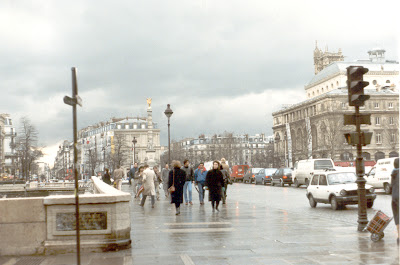

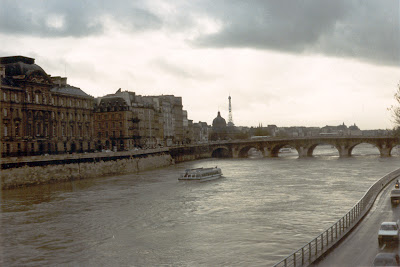


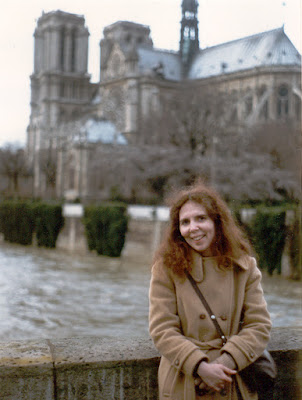 My wife, Dale, in Paris
My wife, Dale, in Paris